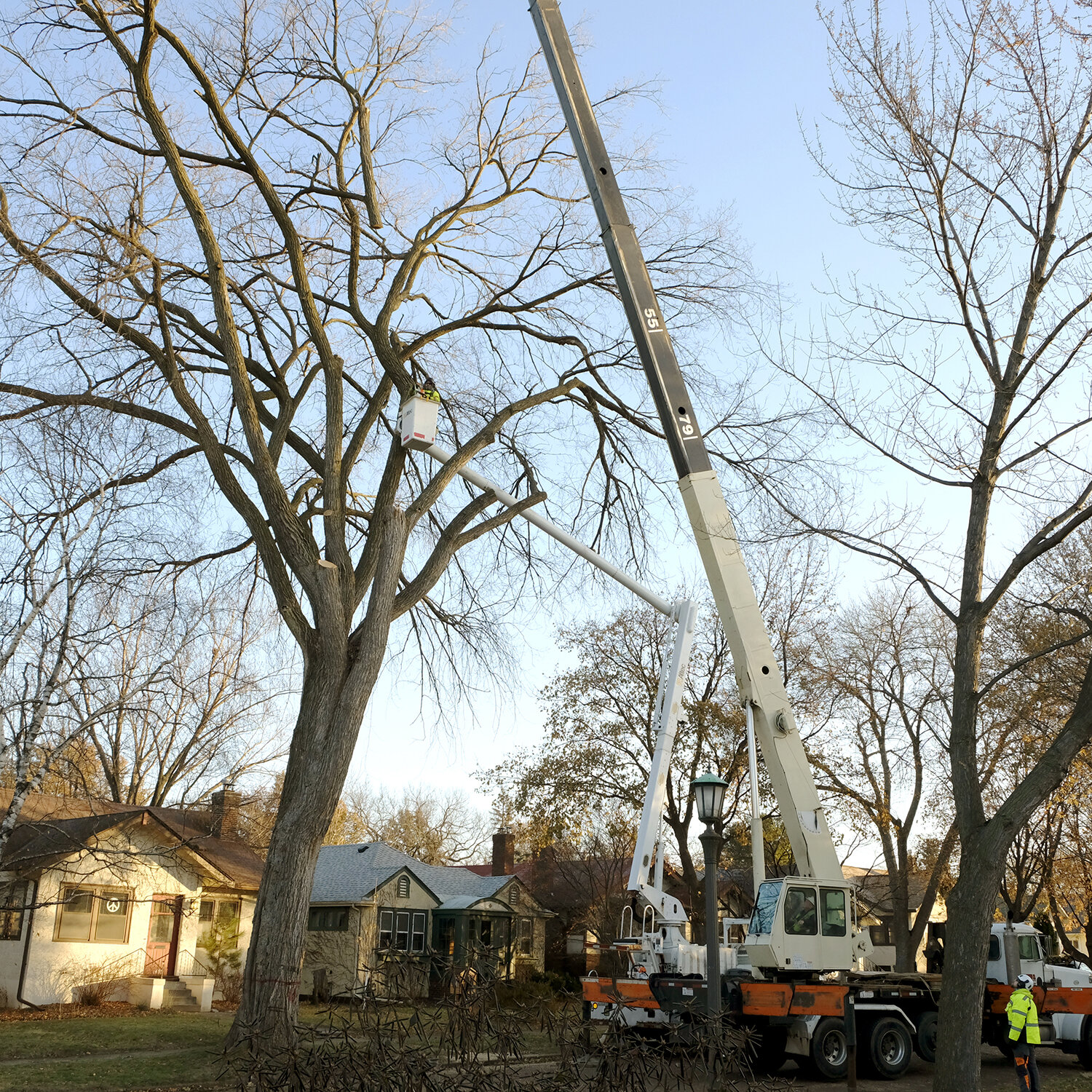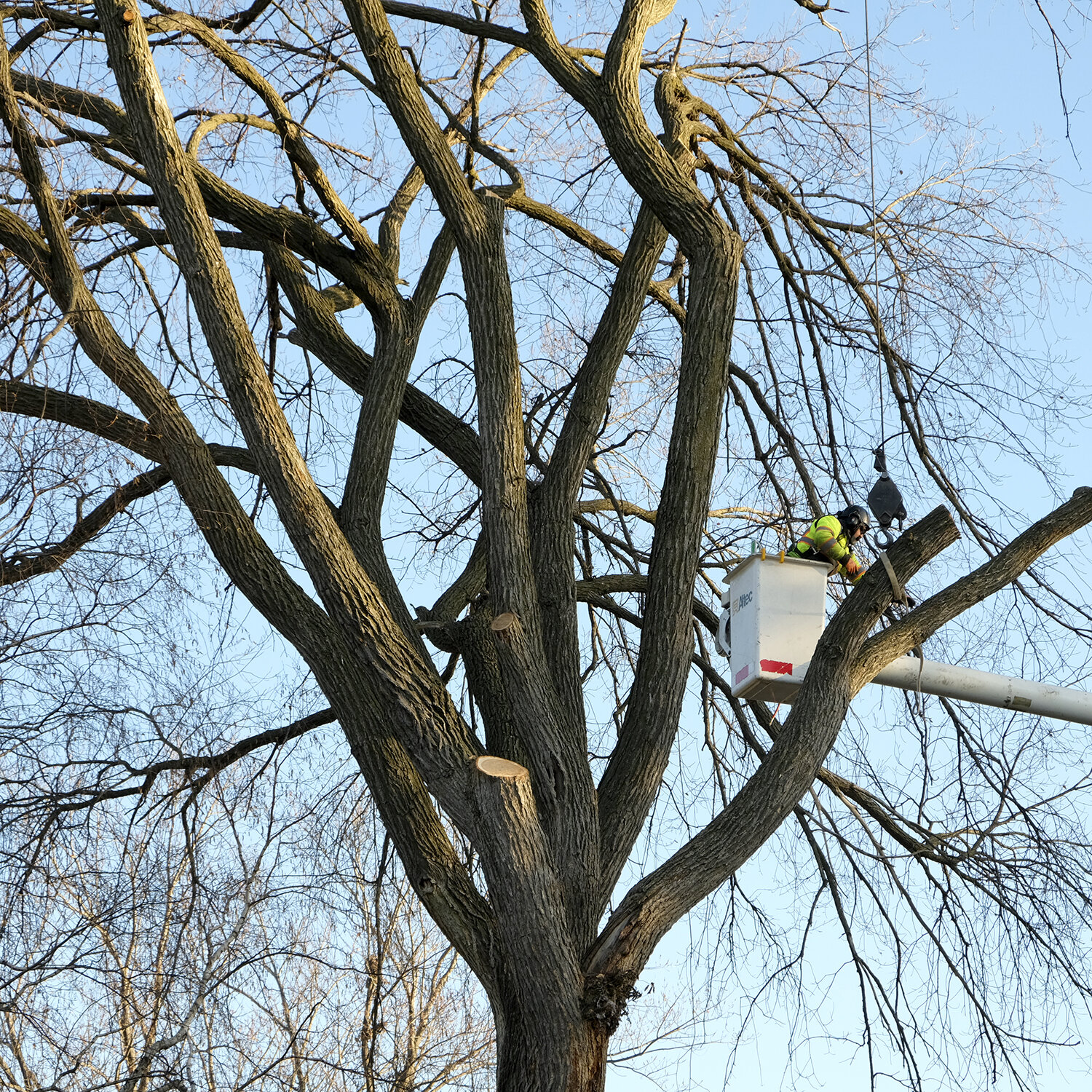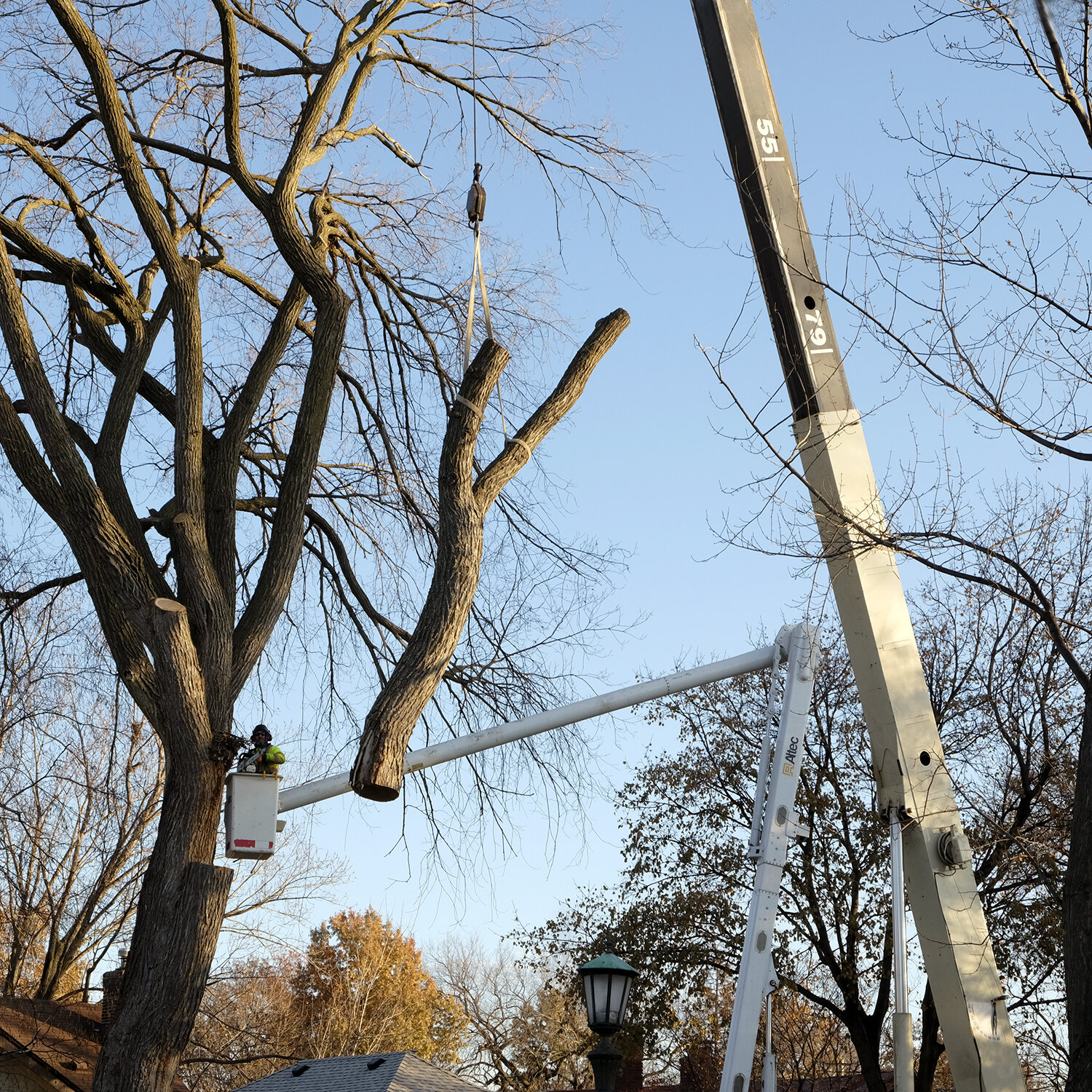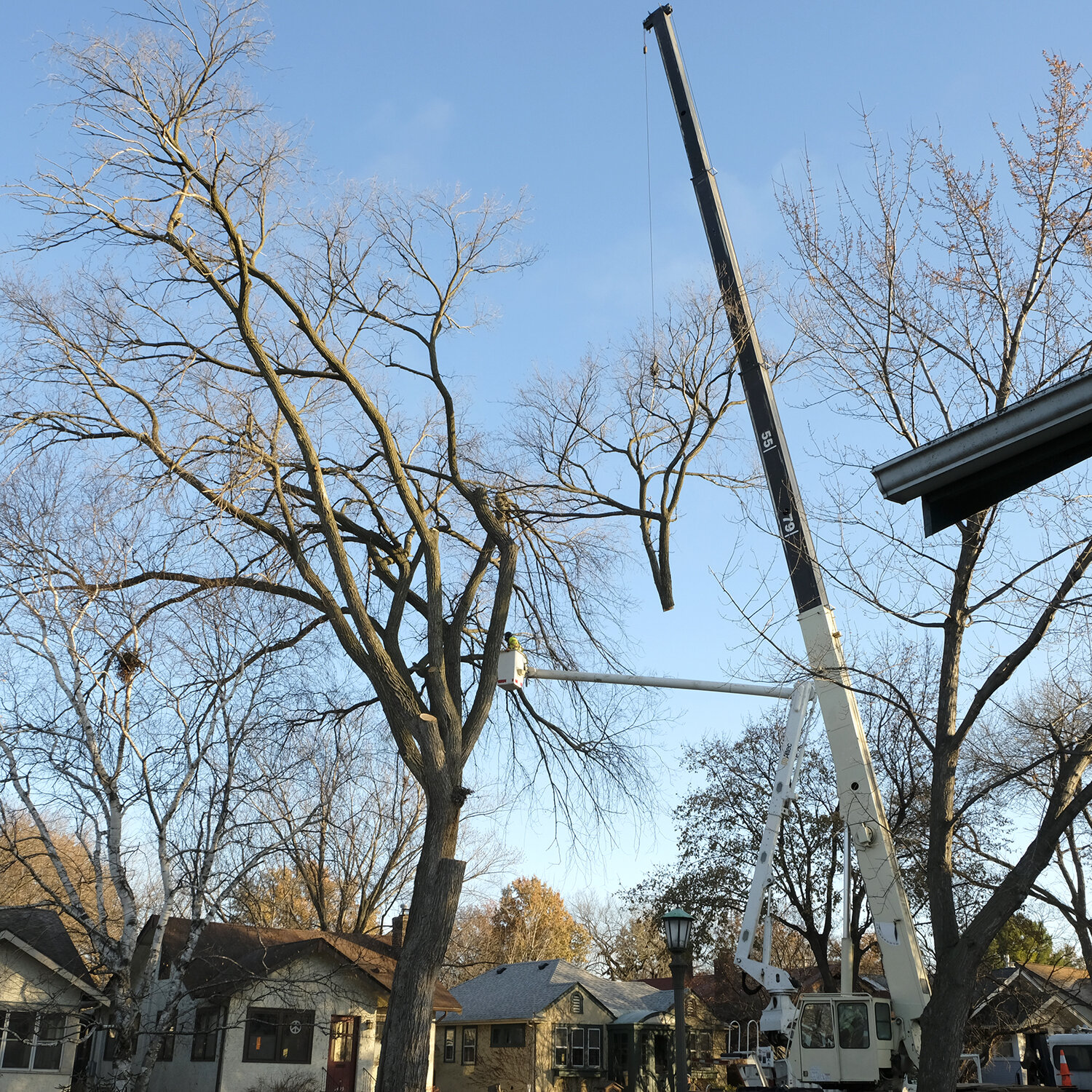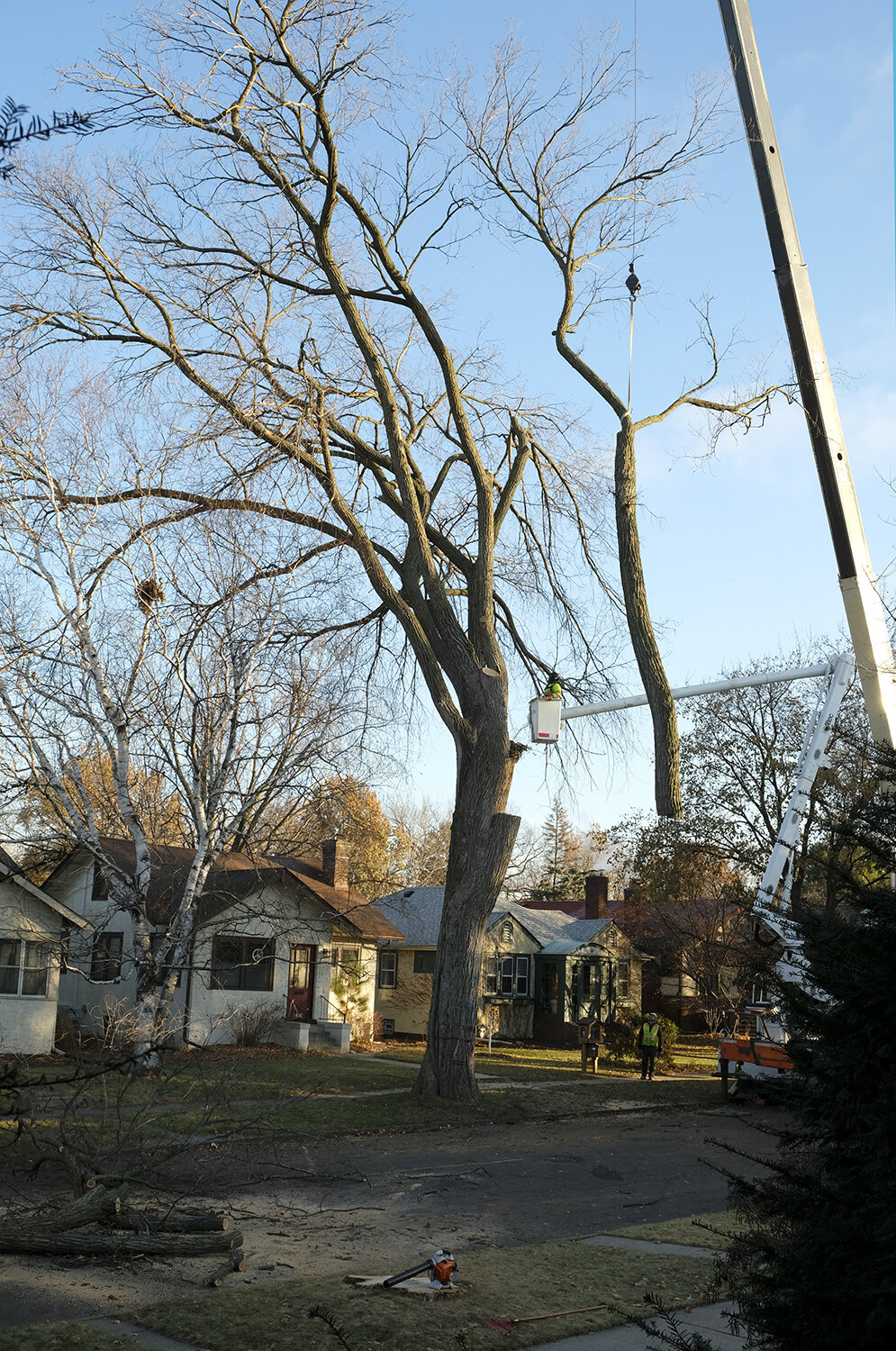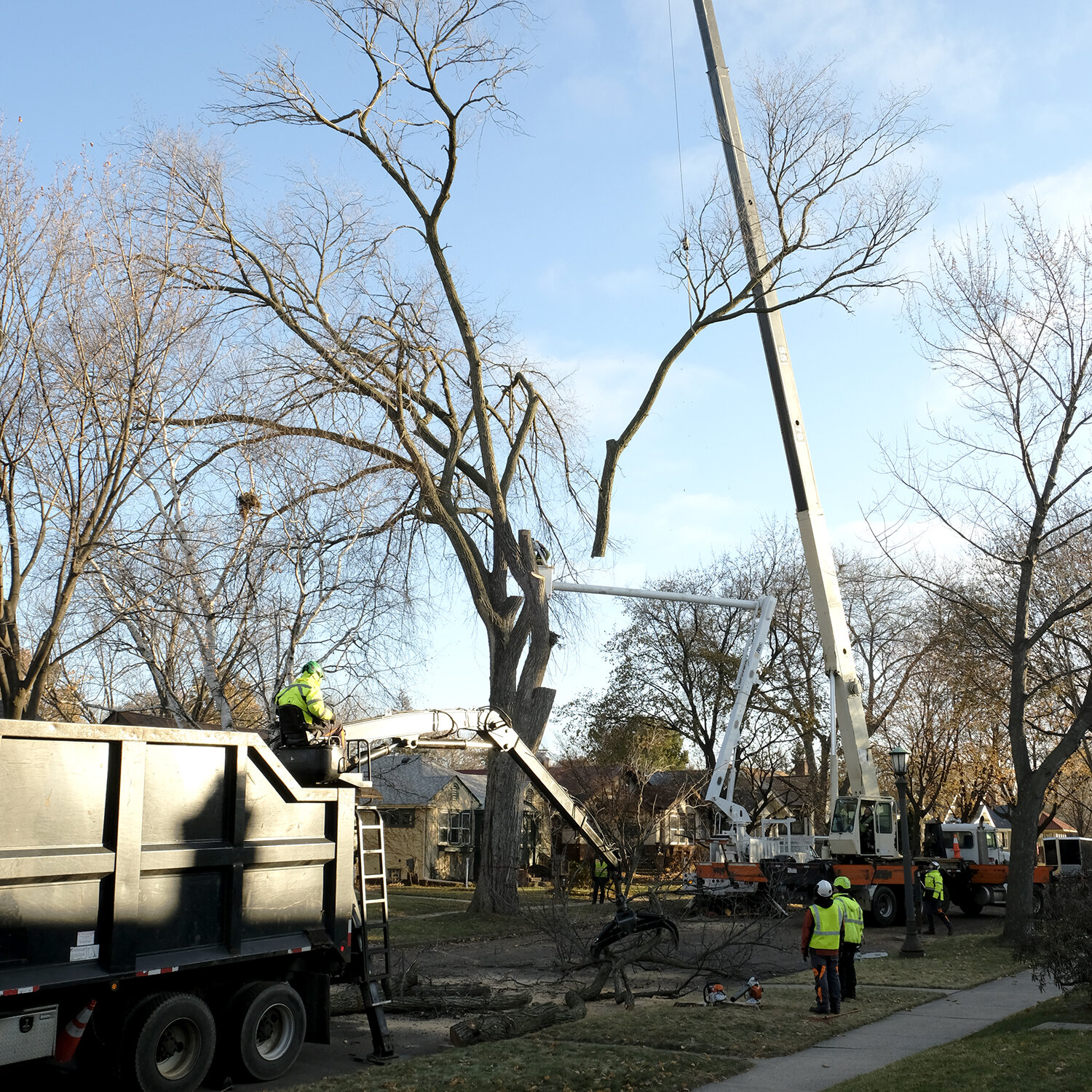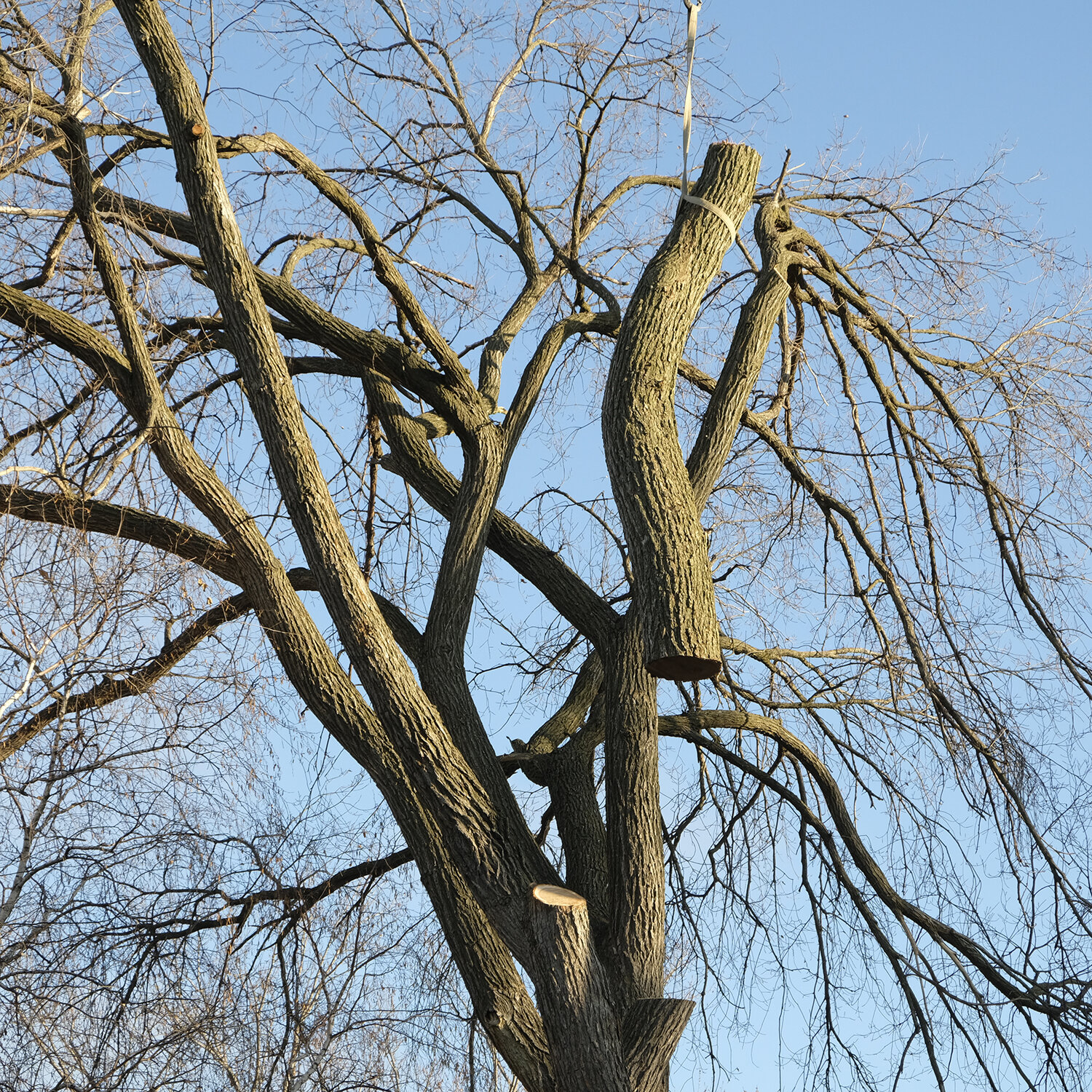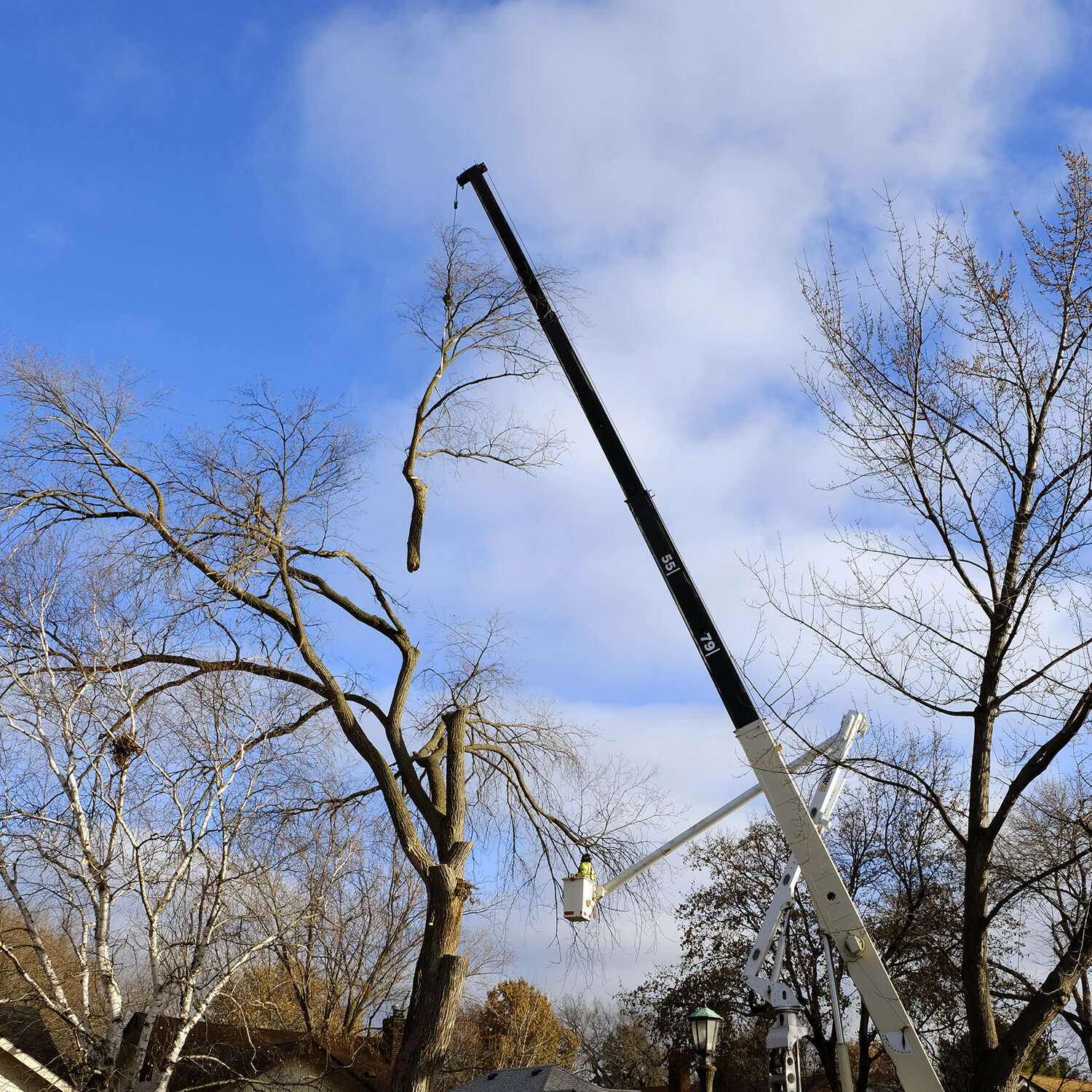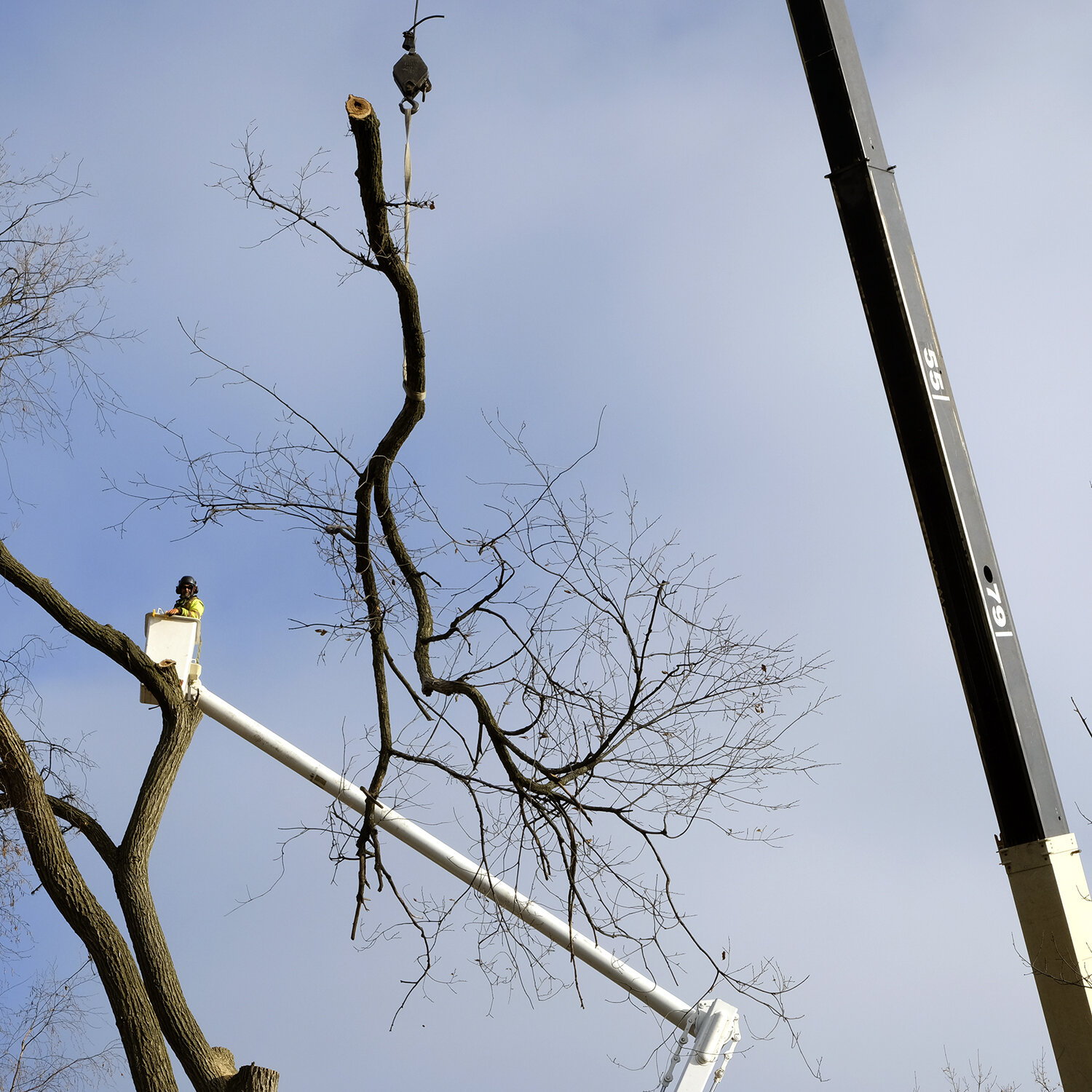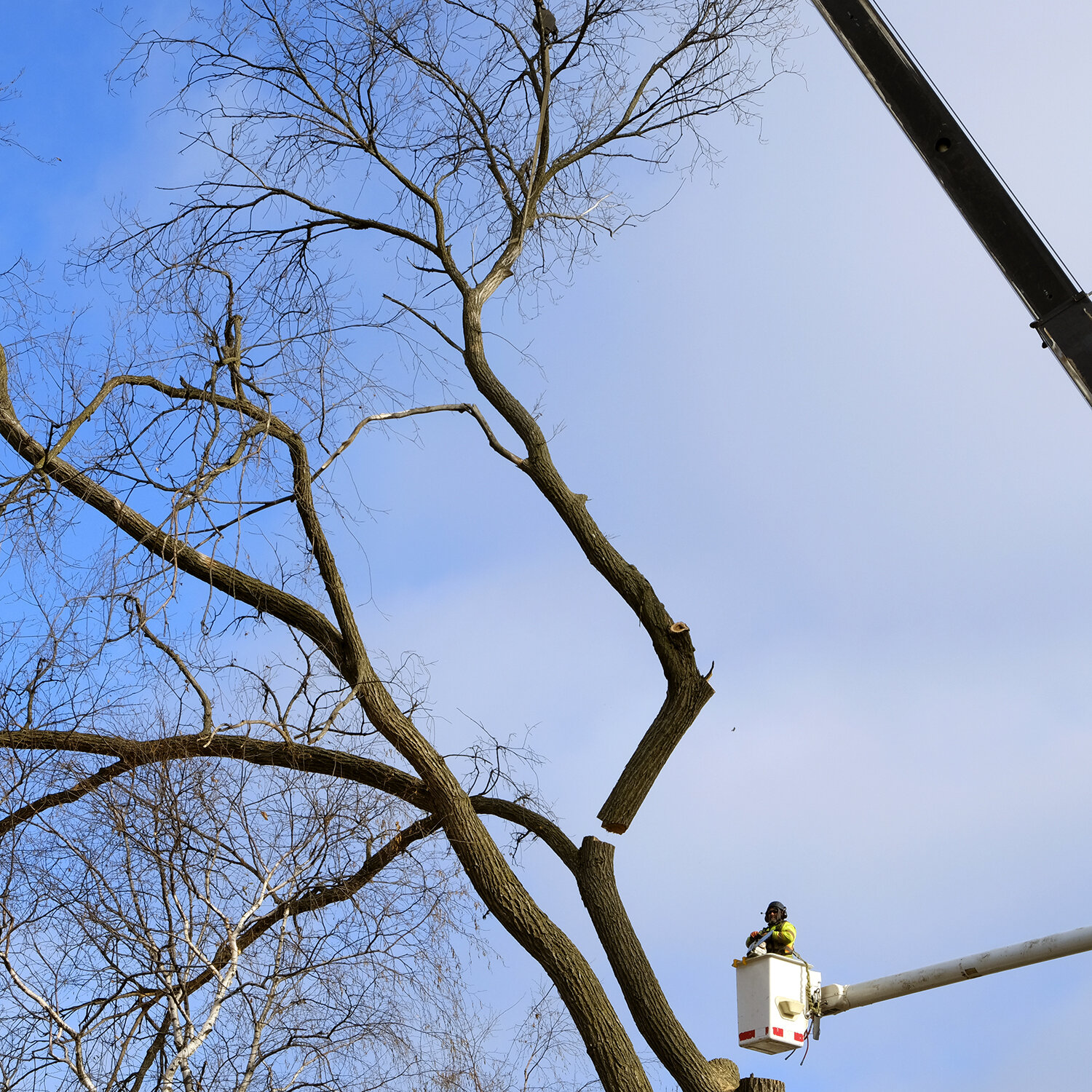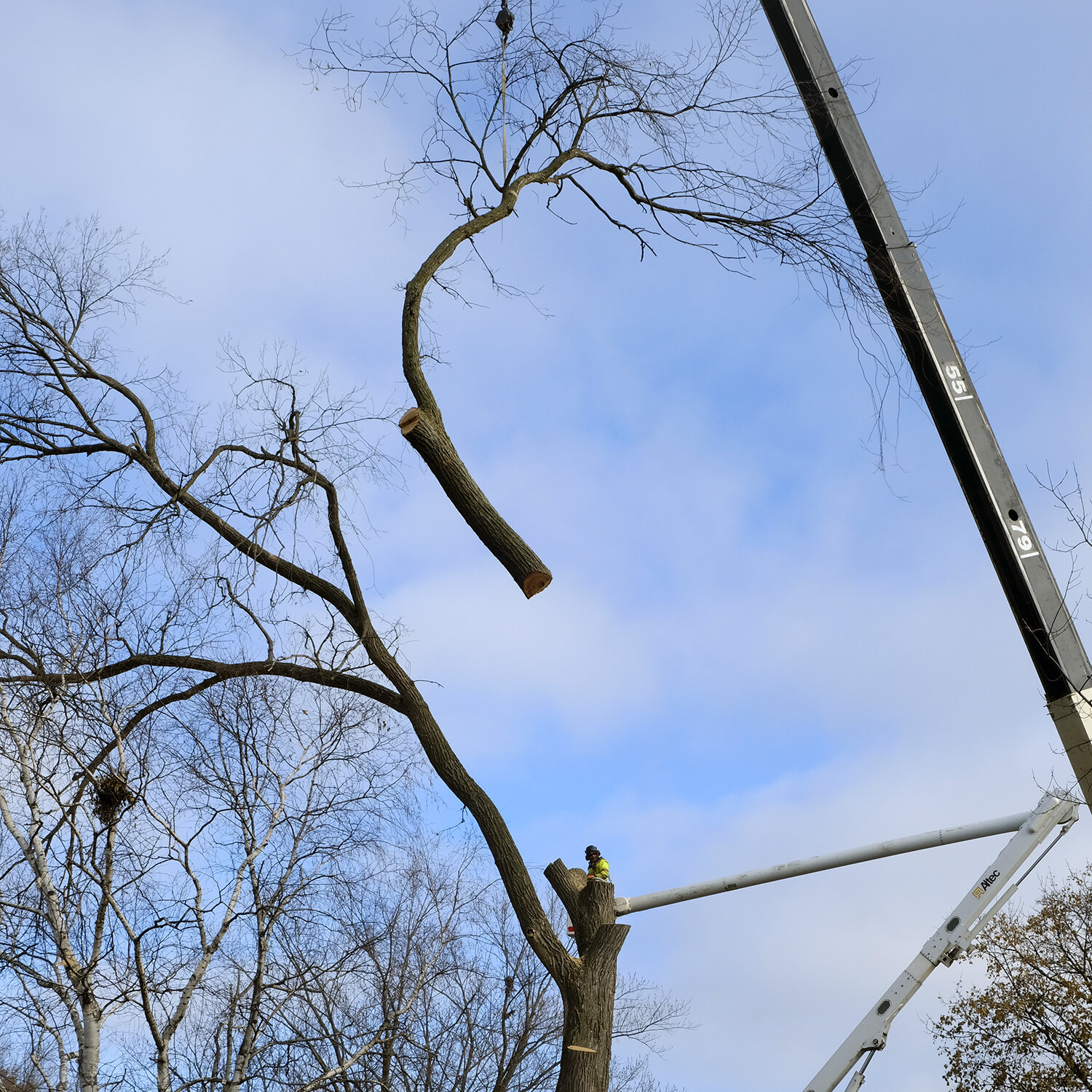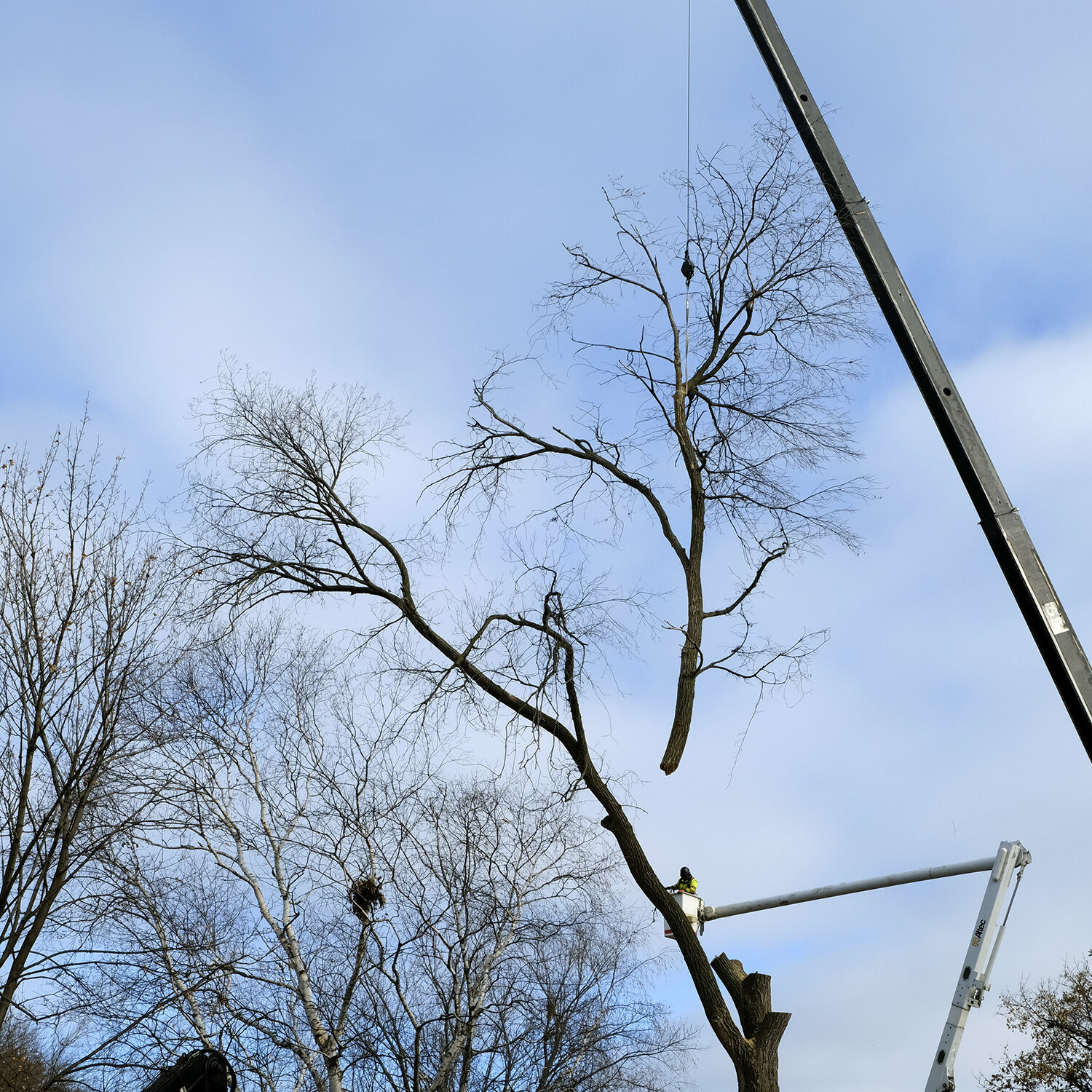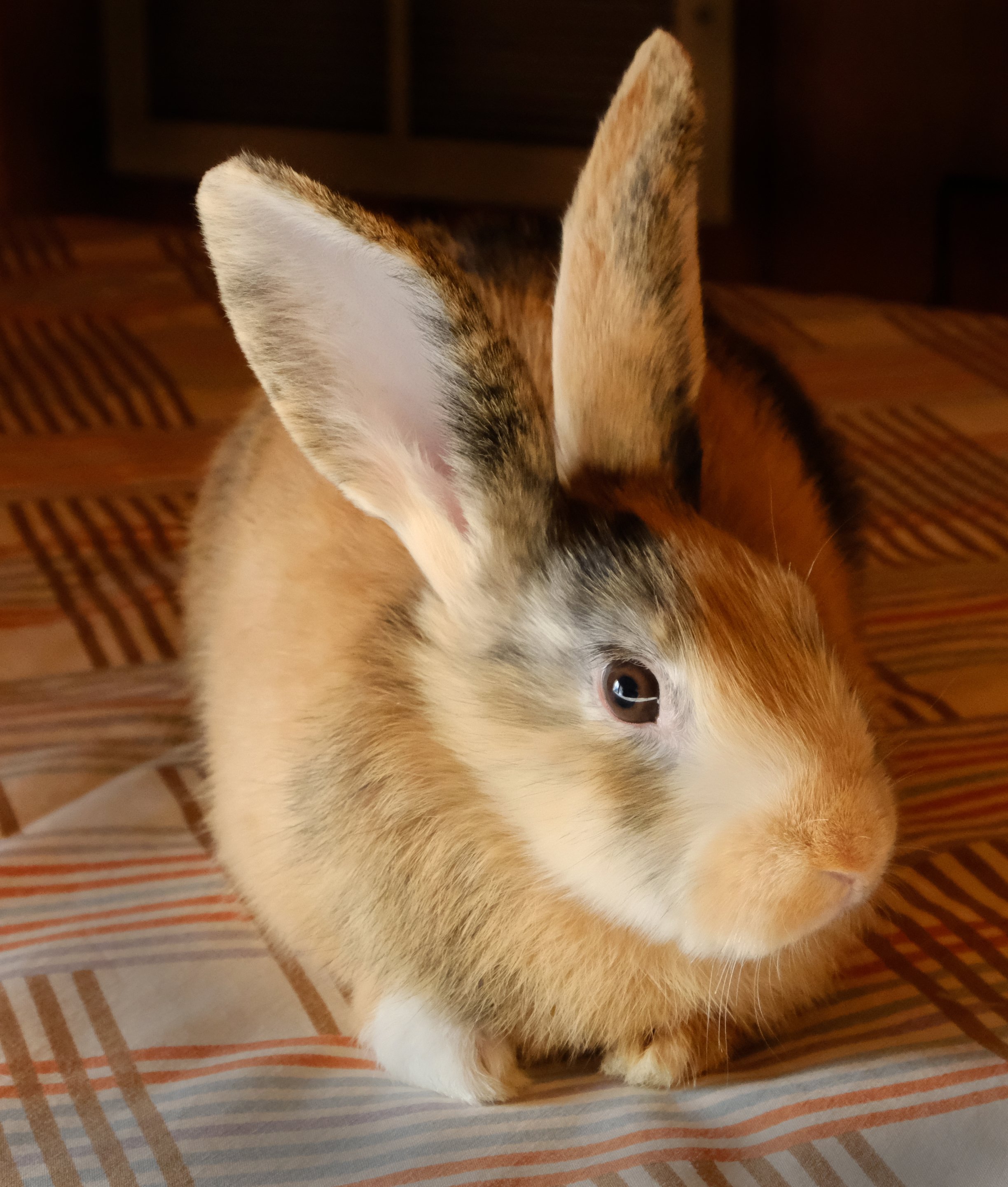There is bright blue sky where the silhouette of a tree should be. The second, larger elm, has been removed. My mind fills in the tree’s outline – the memory of that shape and how it occupied that space is still fresh. In a few days or weeks, it will be like that empty space was always there, and about one-hundred-years ago, it was.
To human eyes, trees grow imperceptibly. We see the big changes – green leaves sprouting in spring and then after frost, falling to the ground. But the years required to add new limbs and girth and to reach toward the sky pass when we’re not looking, at least not carefully enough to notice.
Intently watching a tree over the course of several hours, we might observe the play of light and shadow on its form and the details of leaves and bark, but we wouldn’t necessarily perceive it growing.
What if we connected with the tree on another level – as a living thing with a life span not unlike our own – and understood that they communicate with each other by means of olfactory, visual and electrical signals, exchanging information that researchers like Dr. Suzanne Simard and others are just beginning to uncover?
Would the tree move from the background of our consciousness to the foreground if we realized that when we walk down a shady, tree-lined street, we are among living things (beings) more like us than we know?
While we may not be able to perceive a tree growing, it is possible to watch a tree’s life end. In little over three hours, City workers carved up the magnificent elm carefully piece-by-piece, swept up the sawdust, and carried it away. Two cranes including an impressive one with an extension about four-stories in height, a fleet of trucks, and more than a half-dozen workers applied themselves to the task.
I can find no evocative or poetic language to describe the removal of this stately old elm – I trust this series of photographs conveys the reality and sadness of it all.
